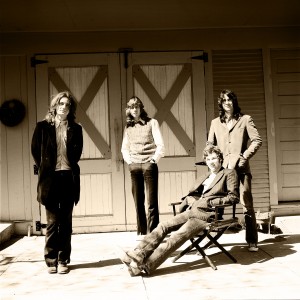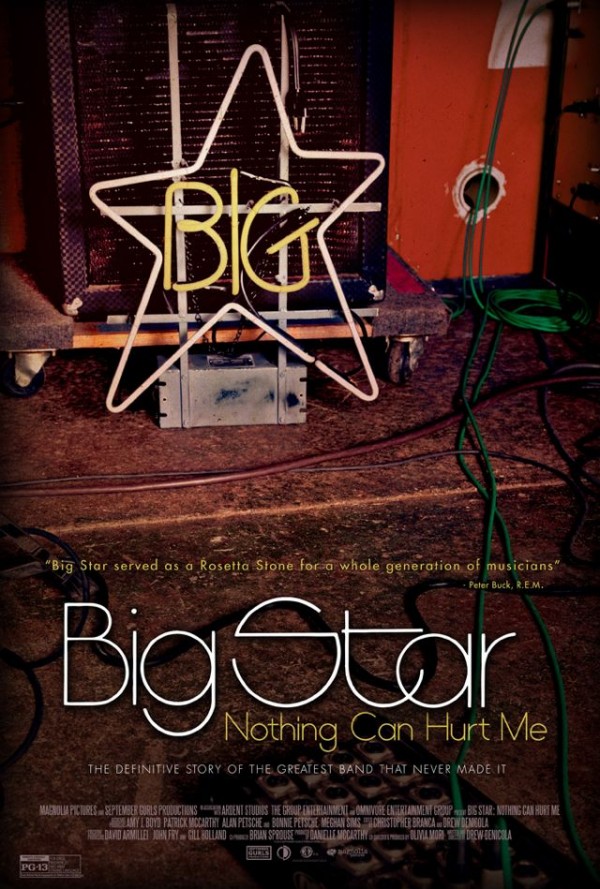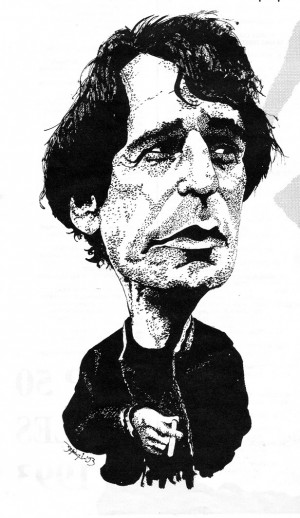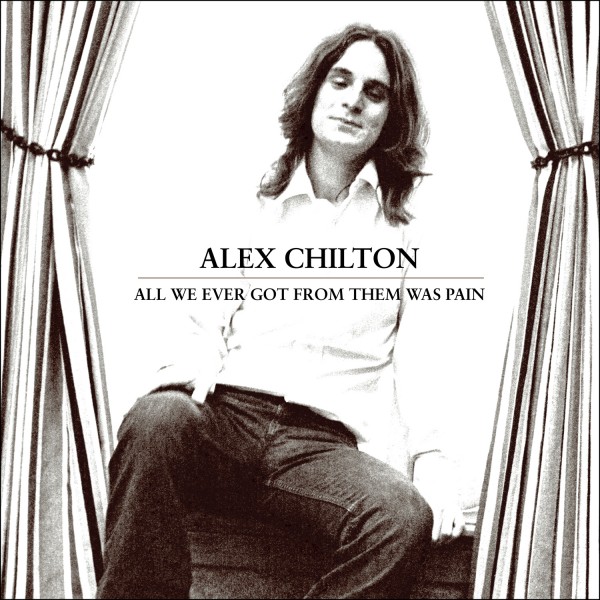Putting the finishing touches on an in-depth Q&A with veteran music writer/friend of Phawker Holly George-Warren’s just-published Alex Chilton biography A MAN CALLED DESTRUCTION. If you don’t know from Alex Chilton, dig in below. Otherwise look for it tomorrow on a Phawker near you!
ROCK SNOB ENCYCLOPEDIA: It has been said that the genre of power pop -– frail, white man-boys with cherry guitars reinvigorating the harmonic convergence of the Beatles, the Beach Boys and the Byrds with the caffeinated rush of youth –- is the revenge of the nerds. Big Star pretty much invented the form, which explains the worshipful altars erected to the band in the bedrooms of lonely, disenfranchised melody-makers from Los Angeles to London and points in between. Though they never came close to fame or fortune in their time, the band continues to hold a sacred place in the cosmology of pure pop, a glittering constellation that remains invisible to the naked mainstream eye. Succeeding generations of pop philosophers and aspiring rock Mozarts pore over the group’s music like biblical scholars hunched over the Dead Sea Scrolls, plumbing the depths of the band’s shadowy history, searching for meaning in Big Star’s immaculate conception and stillborn death.
Big Star was the sound of four Memphis boys caught in the vortex of a time warp, reinterpreting the jangling, three-minute Brit-pop odes to love, youth and the loss of both that framed their formative years, the mid-’60s. Just  one problem: It was the early ’70s. They were out of fashion and out of time. Within the band, this disconnect with the pop marketplace would lead to bitter disillusionment, self-destruction and death. But that same damning obscurity would nurture their mythology and become Big Star’s greatest ally, an amber that would preserve the band’s three full-length albums -– No. 1 Record, Radio City and Sister Lovers/Third –- as perfect specimens of neo-classic guitar pop. That Big Star’s recorded legacy would go on to inspire countless alternative acts is one of pop history’s cruelest ironies –- everyone from R.E.M. to the Replacements to Elliott Smith would come to see Big Star as the great missing link between the ’60s and the ’70s and beyond.
one problem: It was the early ’70s. They were out of fashion and out of time. Within the band, this disconnect with the pop marketplace would lead to bitter disillusionment, self-destruction and death. But that same damning obscurity would nurture their mythology and become Big Star’s greatest ally, an amber that would preserve the band’s three full-length albums -– No. 1 Record, Radio City and Sister Lovers/Third –- as perfect specimens of neo-classic guitar pop. That Big Star’s recorded legacy would go on to inspire countless alternative acts is one of pop history’s cruelest ironies –- everyone from R.E.M. to the Replacements to Elliott Smith would come to see Big Star as the great missing link between the ’60s and the ’70s and beyond.
There is a dreamy, pre-Raphaelite aura that surrounds the legend of Big Star. Like the doomed, tender-aged beauties in Jeffrey Eugenides’ novel The Virgin Suicides, the tragic career of Big Star would unravel in the autumnal Sunday afternoon sunlight of the early 1970s. The band’s sound and vision hinged on the contrasting sensibilities of songwriters Alex Chilton and Chris Bell. In the gospel of Big Star, Bell is the sacrificial lamb –- fragile, doe-eyed and marked for an early death. Chilton is the prodigal son, returning to Memphis after traveling the world, having tasted the bacchanalian pleasures of teen stardom with the Box Tops in the 1960s.
Where Bell was precious and naive, Chilton was nervy and sardonic, but the band’s steady downward spiral would set him on the dark path of personal disintegration –- booze, pills, violence and attempted suicide. Years later, he would reinvent himself as an irascible iconoclast and semi-ironic interpreter of obscure soul, R&B and Italian rock ‘n’ roll. Drummer Jody Stephens, the wide-eyed innocent of the group, and bassist Andy Hummel, the sly-grinning sphinx with the glam-rock hair, were the shepherds in the manger, midwives to the miracle birth. In the aftermath of Big Star’s collapse, Stephens would become a born-again Christian, and Hummel would go on to design jet fighters for the military, anonymous and happy behind the wall of secrecy his job would require. – JONATHAN VALANIA

SLATE: Rather than tell a too-much-too-soon story, Big Star: Nothing Can Hurt Me instead profiles a power-pop troupe whose oeuvre is likened, by musician-fan Robyn Hitchcock, to “a letter that was posted in 1971 that arrived in 1985.” It’s become a cliché to call Big Star, the Memphis group led by the extraordinary songwriters Chris Bell and Alex Chilton, “the ultimate critics’ band,” and Drew DeNicola and Olivia Mori’s rock-doc embraces this truism by presenting the writers and descendant indie-rockers who gave Big Star a successful afterlife as fans foremost, and zealots in the crusade to disseminate their idols’ tragicomically unheard work.
The film is neatly divided in two: It first follows the brief alliance of “art brat” Chilton, teenage singer of a four-million-selling single with the Box Tops, and guitar geek Chris Bell, founding mastermind who succumbed to depression and a car crash in 1978, before documenting the years-long groundswell that saw their cult grow amid reissues, cover versions, and a 1993 reformation. Big Star only released two albums during their commercially invisible career, with label Ardent Records stymied by distribution crises, and the band’s flowering was both nourished and plagued by the local “society of oddballs” (seen in brief, vivid archival clips shot by photographer and scenester William Eggleston); people with big hair, awful shirts, and absurd mustaches reveled nightly after the sale of liquor by the drink had become legal in Memphis in 1970. Before drugs and personal demons took a decisive toll on the band, their triumphant moment came when a gaggle of the nation’s rock critics came to town at the invitation of an Ardent promo man, and were blown away by a Big Star set. Nothing Can Hurt Me mythologizes the event with glowing reminiscences by the attendees, and a sense that it planted the seed for the band’s resurrection, even as Bell was having a breakdown that prompted him to erase master tapes of the first album, and limited his contribution to their second to songwriting.
Handicapped by the near absence of live footage of the band’s heyday, DeNicola and Mori give a fair hearing to most sides debating the algebra of Big Star’s quick flame-out in the ’70s, from flying against the prevailing musical winds (“We weren’t heavy“) to the indifference of industry players. But it’s also clear that they benefited from the nurturing of Ardent owner John Fry, producer Jim Dickinson (of the stillborn but eventually acclaimed third LP), and the cadre of enthusiasts who raved about them in the music press when they weren’t tracking Alex and Chris down at their post-breakup restaurant jobs. MORE
PREVIOUSLY: The year is 1999 and I’m heading over to Alex Chilton’s house, a charming Creole cottage of Civil War vintage he’s in the midst of restoring. Chilton is a forbidding totem of American music with a formidable pedigree: white soul prodigy; guiding light of Big Star; progenitor of power-pop purity, pill-addled punk and swampy garage blooze; indie’s aging princeling of white failure. He’s a musician’s musician, and each entry on his resume has spun off countless imitators and innovators.
He got his house for a song, he tells me, because it’s located in one of the Big Easy’s more depleted neighborhoods. He’d warned me in advance that cab drivers were reluctant to venture there during the day and wouldn’t even consider it after dark.
As the cab slows at a stop sign, two men in tracksuits approach and the driver waves them off, slamming the locks down and rolling up the windows. I see the suspicion in his eyes as he shoots daggers at me in the rearview mirror. What business would a white boy have here other than scoring drugs?
“Why are you going here?” he demands.
“I’m going to visit Alex Chilton. Do you know of him?”
The cabbie ignores me. As the sun dips below the skyline, I begin to wonder how I’m going to get back to my hotel.
“Will you come back and get me later on?” I ask.
“Hell no!”
When we finally get to Chilton’s house, it looks like a beached tugboat in the weeds. Bars cover the doors and windows. Once inside I tell Chilton about the cabbie’s uneasiness.
“Well, one of them did get shot down the street a month ago,” he says straight-faced, before turning indignant, adding, “But it’s broad daylight! What a pussy!”
Chilton is the only white person in the neighborhood, he confirms, though that could soon change. A Caucasian couple is looking to buy the place across the street.
“There goes the neighborhood,” he deadpans. “I’ve always lived in black neighborhoods. I’ve always related to black people more than white people. If I lived in a white neighborhood, all my neighbors would be washing their BMWs and tending to the garden, and I can’t really relate to that.”
Chilton said something else to me that day that would become evident in the wake of the recent flood and the diaspora that followed: “In the South they don’t care how close the black man gets as long as he doesn’t get too big. In the North they don’t care how big the black man gets as long as he doesn’t get too close.” MORE

